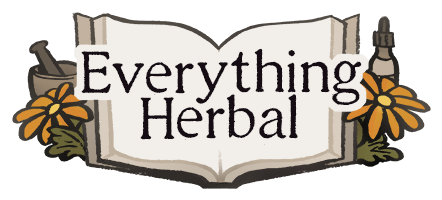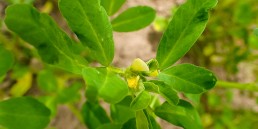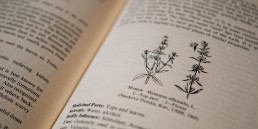The Weaving: Plants, Planets, and People
A Conversation Between Abrah Arneson and Victor Cirone.
Welcome to an interview with Abrah Arneson! This interview was conducted by Victor Cirone alongside photos provided by Serena Mor.
📖 This interview was conducted for our bi-monthly book club, Featuring the book: “The Weaving: Plants, Planets, and People” by Abrah Arneson. We will be holding an open Zoom call discussion with Abrah on October 7th, 2021 at 7:00pm EST. If you would like to join us, please send us an email at hello@everythingherbal.ca and we will send you back the Zoom link! 📖
For more information and and links on where to purchase The Weaving, check out the book’s Goodreads page: [here]
Victor: I thought we’d start our discussion by exploring the title of the book, specifically the notion of weaving. It’s interesting to note that the Latin word for text – texere – actually means ‘to weave’. There is an intimate connection between writing and weaving. The question for the writer is: what is the material that you are weaving, of what are the threads that you are drawing upon to create a text composed? Tell us about the threads that you weaved to create this book.
Abrah: The original title of the book was Ancestor Medicine: Plants, Planets and People. The woman who midwifed the book didn’t like that title. I love the Fates and the idea that they are weaving us into life and that we are woven into life. What I’m trying to do with this book is to find the threads that weave us into life, to discover them again. Our connection with planets, with stories, with plants. Weaving ourselves into interdependent relationships where we are not separate and there is no hierarchy. When you understand interdependence and wholeness then you see that when you pull one thread, everything is going to unravel or everything is connected to everything else.
When I was writing this book I was playing a lot with time and how the future and the past is present here – in the here and now. I was playing with the reality of how time is woven.
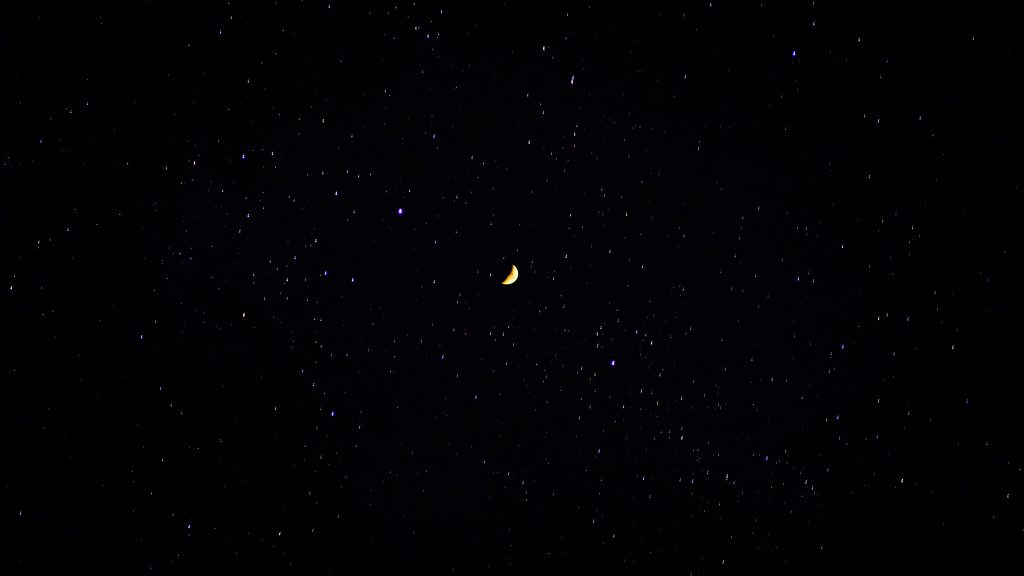
V: I was reading the poet Robert Duncan and he says something very similar to what you’re exploring here: “The fabric of history, of memory, then, must be continually woven in order to exist because it is not the fabric of the past but the fabric of the present that we weave.”1 There is a certain responsibility that comes with the activity of weaving the fabric of reality. In the book you are taking these threads from many different directions and trying to create a kind of tapestry, an image of wholeness.
A: Again back to the theme of weaving. I experience the weaving as not only the visible threads that binds us to life, but also the invisible ones – the energy lines. I’m always exploring this idea. The body/mind is a weaving. And again, the notion of the Fates weaving the soul and body together in utero. The idea of a thread: the opening of the book engages the idea of a thread that emerges from the top of the newborn’s head, and is tied to a star.
I find that metaphor evokes an experience of a weaving of a much bigger experience of reality than “I wish this person would get out of my way because I want to make this left-hand turn” mode of reality.
V: This expression isn’t used so often today, but it’s still there in our language: “to weave a tale.” This shows us that there is a primal and innate connection between storytelling and weaving.
A: Yes, and then there is the magic. You can weave a spell. Weaving is an interesting word; it’s a big and evocative word.

V: Let’s talk about the role of the storyteller and the central role of stories in the book. You’ve written: “I have always thought the best way to learn herbal medicine, with its subtleties and complexities is through story. Have you ever noticed the best herbalists are great storytellers? Good stories carry advice on living in harmony within of the complex web of life. Old stories tell us about the people and the places we come from, what they believed and how they saw the world. Stories that have been passed from one generation to the other offer medicine.”2
One of the things I really appreciated about the book is that it’s so full of stories; the book serves to show that there is a deep wisdom that can only come through the medium of storytelling. Stories are not about conveying information, but about the transmission of wisdom. A piece of information doesn’t survive the moment of its newness. You hear a piece of news and soon enough it fades away and loses its relevancy and significance. The wisdom that comes through story, in contrast, has a timeless and eternal dimension to it. A story doesn’t expend itself but preserves and concentrates its strength and essence. What you said about teaching herbal medicine through story gets us back to that originary tradition of healing. And what you are doing in terms of the narrative and structure of the book is getting away from the reign of information, the obsession with facts and lists. And later in the book you do even wage a critique against the list, against that whole mode of categorizing reality based on information and “facts”, which so often leads to a dissociated view of the world.
A: Well you know lists do have their value but they are not life. Life is far from linear. And – well, who doesn’t like a good story? Stories contain wisdom: the interesting thing about stories is that the more you work with them, the more you play with them, read different interpretations and think about them, and really embody them, stories begin to start teaching you and revealing different things to different people at different times. I think that’s what’s so interesting about really good stories, old or new, they are teachers. In any given moment, in moments of personal struggles, a good story will be the best medicine because they never provide an answer but they open up a space up for a different perspective to emerge.
The stories I picked for the book are, I feel, great stories. In the book I’m trying to weave the settler culture – because I’ve reframed the type of herbalist I am – I am a settler herbalist, I practice settler herbal medicine – and when the Europeans came to North America, not all of them but many, lost their stories. That is why North Americans are so into cultural appropriation. It’s because they’ve lost the roots of their stories, they’ve lost contact with that depth that the stories emerge from. The Weaving is trying to wake up those roots that we all have so we don’t have to rely on other people’s stories to give our lives meaning. We can of course enjoy and learn from other people’s stories, but we don’t have to use or rely on them when it comes to the formation of our own personal identities. At the same time, that exploration of how stories are changed to suit particular cultural and political epochs… I remember once when I shared the story of Sarah and Abraham, someone said, “Oh people will be upset by how you rewrote that story.” But we don’t know what that story really was to start off with.
V: There is a tendency to try and take a living thing, which a real story always is, and to deprive it of its life by turning it into something literal. When you make a concerted effort to pin down the meaning of a story, you end up killing it. That literalizing tendency violates and works against the very nature or essence of what a story really is.
A: Yes, to Disnefy it. Stories necessarily change with the storyteller. I tell a story one way, and then 6 months later I’m in a different relationship with that story. And then it’s like “Oh yeah! How did I miss that whole part of the story?” With Airmed’s story it wasn’t until I was reworking the final, final draft of the book that I realized it was a story about murder. I had opened the whole book up with a story about murder! Murder is a major theme throughout the entire book and it kind of made me think “Oh, where is the murder in my ancestry?” I didn’t see the murder at first.
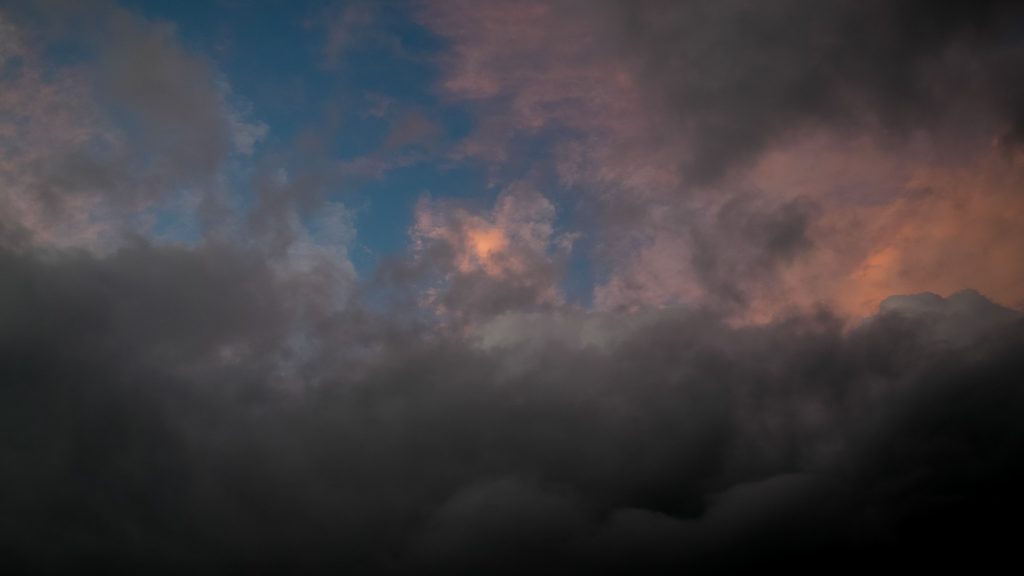
V: Another aspect of storytelling, and a big theme in the book, is remembrance and remembering. Remembering restores possibility to the past. When you are engaged in an act of remembrance it makes what happened incomplete and completes things that never were. Through remembrance you can take possibilities that were abandoned or destroyed and give them life again, you can make things possible again, but always in a new way, through the act of remembering. This is the dimension of living history.
A: There might be periods in one’s life where one doesn’t remember, and that is a safety mechanism in consciousness from complete annihilation by trauma. Big traumatic events we don’t remember clearly or at all. Yet, when we do not remember – so much of our goodness is lost as well. Eventually, a container needs to be created to hold the traumatic memory but also the gifts that become lost with it… Whether it is a story that is the container or a healing therapeutic relationship, or a song… we need a vehicle that allows us to hold those tragic memories within our wholeness. That is what we’re going through right now, a big remembering, and it’s painful. But who wants to walk around pretending there aren’t a bunch of bodies buried out behind residential schools? Back to murder…
V: You write: “When we forget our dreams something inside us dies. When we forget our path, our joy, the hunger for remembrance lies like a snake twisting in our roots gnawing at our sense of belonging. When we forget our medicine, we forget the hardships and wisdom initiation brings. When we forget who we are, we are lost.”3 There is a certain kind of violence in the active forgetting that has become so pervasive in our world and in our culture. The storytelling that takes place in the book serves to give people tools that they can use in their own way to engage in the activity of remembering.
A: I really hope I’ve conveyed something of that, the confidence to remember, that it is okay to remember.
V: With remembering there is also the theme of time. The book invites you to step into a different relationship with time. That was one of the revolutionary aspects of the book that came through for me, because in order to change the world you have to change time.
A: I don’t know if I’m that insightful (laughing). But we do have to change time, time wasn’t linear before factories, it was circular, hence the round face of the clock, like the moon. Before, when it was time, it was time, and now, all of a sudden we’re obsessively following and being ruled by a clock all of the time that reaches into so many aspects of our lives. I don’t know about you but the biggest bane of my existence is this whole time thing. I struggle not to have anxiety about time; it really is a constant source of anxiety for me. It kills any creativity I have, destroys it. Essentially I am a wanderer. Nothing nourishes me like timeless wandering. That’s an interesting point: that if we are going to change this world we have to change our relationship with time. Beautiful. Thank you for that.
V: It came through in reading your book; it’s in there.
A: That’s what’s so interesting about stories though. They are filtered through our different experiences and language and then you can have conversations like this. It’s not my story, it’s your story, and the meanings come in different ways.
V: And that itself is a kind of weaving.
A: It’s so beautiful, I love that. There is no right answer.
V: Related to that, there is a strong current in the book about reclaiming personal power and what it means to step into one’s power. I really appreciated the passage where you wrote: “Only you can make your medicine. I don’t mean tinctures, teas, salves, etc. I mean the medicine in your heart, the medicine of inspiration, medicine carrying wisdom. Only you can create medicine that weaves your awareness into Nature’s web, the medicine that allows you to rest in nature’s paradox: everything is in chaos and everything is okay.”4 Can you say something about the ways that you were hoping the book would impact people, how it would allow them to take a different perspective on their own lives? About their own possibility of being in the world, about the ways that people can embody themselves in the world. There is a call to do that in the book.
A: I am so tired of Gurus, and other people having all of the answers. Today I was talking to a woman who had this fairly profound experience and is looking for some kind of container, answer, for it on Google. I just said that you’re not going to find the answers outside of yourself. What you’re looking for is inside of you. We need to be able to hold space for that to happen. We don’t need to provide someone with preformed meanings from outside when the meaning comes from inside. Telling people the answers, robs them. It’s like a forgetting again. Mostly I’m just so tired of Gurus and experts and people who “know better.”
The other day I went into Ottawa and I had two things happen. First, I was going down the hill from my house and there was a car stopped in the middle of the road and this guy was waving his arms stopping traffic. And then 12 ducks waddled across the road. The guy stopping traffic is my neighbor. My neighbor drinks a lot. He listens to bad music, and his place is completely ramshackled. He’s the kind of guy that it is easy to make assumptions about. But he was out there stopping traffic for these ducks. I saw him down at the beach later and he said “Oh there she is, I’ve been looking for a woman to put a spell on me for a long time!” He was pretty drunk. And I said, “Okay, here you go” and he didn’t know I saw him earlier stopping traffic, “I put a spell on you that you must stop to save ducks whenever you see them on the road!” He just started laughing; even though everything is wrong with this guy, his heart is still there. And he starts to tell me about the ducks amazed that I had said that. In any case, I told I saw him do this. Now I call him Saint Duckling and he loves it.
Second, I bought some strawberries while I was in Ottawa. As I am leaving the city I’m waiting in traffic through a light to cross the bridge. There are guys that walk up and down with their hat out to the stopped cars. There was this one guy who had no teeth, shirt off, covered in tattoos, a really rough looking character. As he walked past my car I dropped two big juicy strawberries in his hat and he just started beaming. He was so happy. Then he starts talking to me in French about how beautiful the strawberries are, and all of the memories they brought up for him. it It was a great experience to be in his joy. These two people who look so “broken” are carrying so much wisdom and kindness in their hearts. If I was on the street panhandling could I express that kind of joy? I’m so tired of Gurus deciding what I should and shouldn’t listen to. Not that I’m going to go to my neighbor for advice, but I certainly am not going to dismiss him because of his pain. Everybody has a gift to offer if you’re willing to receive it.
V: The whole fetishizing of Gurus makes people forget that they have their own innate intelligence and wisdom. Instead people think, “Oh I just have to listen to this person, hold them up on a pedestal, I don’t know anything but they will show me the way.” It’s a hierarchy that is driven by a lust for power, profit and control.
A: Yes, I’m so tired of that. I’m much more interested in what gifts we all have. Our traumas do not heal us, it’s our gifts that are going to heal us so let’s talk about, explore, and embrace them. That guy who accepted those strawberries gave me a beautiful gift, and he didn’t even know it.

V: Here’s another passage from the book that I’d like to discuss: “I had the feeling the relationship between plants and planets was pointing to a lost language, or a lost way of being in the world, or the thread that if I followed would lead me to a deeper understanding of who my ancestors were, the stories they had told and the events that had shaped their lives. And so The Weaving began to put down roots and seek the light of day.”5 This reminded me of one of the last things that Rudolf Steiner ever said: after a person passes through the gate of death, they enter the world of the stars. What we are accustomed to calling stars in the external, physical sense are really an outer sign and symbol of the spiritual world that looks down upon us, takes part in, and oversees the deeds and the evolution of our world. This connection between ancestors, which is a big theme in the book, and the stars…
A: That is Yggdrasil, the great starry tree. And the idea of the birds as the messengers flying between Earth and its starry branches. How can you not love that image. It is also the Cauldron of Annwn. The cauldron is described as midnight blue studded with pearls. The starry sky is the Cauldron. If you sit quietly and evoke the vibration of the different planets, you will feel them in your body. Humans used to talk about them like Gods, but that has been lost. I remember presenting some of this material to a group a few years ago, right before COVID, two days before the shutdown, and this one person said “Well why are you talking about planets as Gods? I thought this was about astrology?” And, well that’s it! People don’t see that connection anymore, they’ve forgotten.
V: What else about the connection between stars and ancestors? These two themes are so strong in the book, and in a sense they are one in the same thing.
A: Look at the idea that comes from the perspective of science, that rocks ricochet off of Jupiter’s force field and seeded this planet. That’s modern science saying that, it’s not mythology. And the star beings, all mythologies have this notion of star beings coming down and seeding this planet. I don’t want to sound too out there, but I do believe that we connect with some people in a big way, and others not at all because we come from different stars. Of course we are connected to the stars, and this takes us back to this idea of the thread woven by the Fates that would connect a person to a star. What’s that about? If you knew you were part of a star that you could wish upon… If you know that you came from a star and you were raised with that knowledge, think about how empowering that would be as opposed to someone telling you that you came from an egg and a sperm that formed your body and then you walk around, you acquire lots of stuff, and then you die. That’s our current mythology. How lacking in imagination is that? But with this idea that you are born and there’s a thread that connects you to a star… then anything is possible.
V: Can you talk about why you wrote about the particular plants that you did?
A: That was a hard process. There were some plants I wrote about that aren’t in the book. Their stories were too big! I really wanted to explore the European psychotropic plants: belladonna and mandrake. One of the things that’s so tedious as a herbalist, you go and Google mandrake and everyone writes about the black dog (the black maligned dog) and the Harry Potter jokes and that’s as far as it goes. Is that really all we want to talk about? I wanted to understand those plants, because they are part of my ancestry, part of my ancestors’ medicine. Today people say, “Oh no don’t touch belladonna!” Like something bad is going to happen if you do. (And my dog has never eaten Belladonna’s berries even though she picks all the raspberries) Belladonna is a lot of fun. Mandrake I haven’t played with it beyond growing it at this point, so I don’t know it as well but I will. And we are back to the stars because these are plants that evoke an alternative reality. The whole group of psychotropic plants, which is such a big piece in herbal medicine and healing today that so many people are talking about… but even here we can see the disconnection, we are going to things like ayahuasca, peyote. But I can actually grow belladonna and mandrake, and I wanted to wake up some of that forgotten tradition a little bit. Settler herbal medicine.
And then there are really common plants in the book, like Valerian, which is one of my plants, everyone knows Valerian, but it is a really hard plant to use well. And Mugwort. Again, everybody knows Mugwort, but when do I really want to use it? When is it really called for? Most of the plants in the book just popped up. But they had to have some juice to them for my creativity. I didn’t choose them really, they chose me. At times I waffled around with the writing when suddenly everything would connect and the weaving became easy. They are all European plants, that was the one requirement for the plants. Really, I didn’t curate the selection of plants that consciously.
V: Another theme that powerfully came through in my reading of the book was the multifaceted discussion around curses. You talk about addiction, poverty, health afflictions, and you write that the most stubborn of all the curses are belief systems, which tend to run in families.6 The whole idea of inter-generational trauma, of trans-generational trauma and how much that can have an impact on a person’s life without them necessarily being aware of it. You explore the different ways of needing to address that trauma and different approaches to understanding it. Can you say something about that theme in the book, inter-generational and trans-generational trauma and approaches that have come up for you in terms of working with patients that have had these issues?
A: In shamanistic traditions there is always the image where the shaman is torn apart and then put back together again. When they are put back together again, they have something special to give; they have access to their gifts. Before that they don’t have access to their gifts. As they are being torn apart or while they are torn apart, they are in a formation stage; it’s only after they are put back together and made whole again that they have that access to their gifts. That image or story can be found all over the world. We are born, we are attached to this star, all of our gifts are in play and then our ancestors tear us apart because they, themselves from some reason have lost themselves. Somewhere along the way they said yes when they should have said no. Or they let jealousy come into their heart. Or they sent their son to war and he never came back and they never forgave themselves or the government or whoever is to blame for their despair. Or they were raped. Or there was no food. Or they had to run for their lives while their village was being destroyed. We all have ancestors and their histories to bear. There are more horrible stories than there are Cleopatra stories or the Native princess who is a wise healer.
People are taught “no, you can’t touch that, don’t touch plants, that doesn’t belong to you don’t touch it, you shouldn’t ask questions, you have to eat this food, or the worse negation – that’s weird…” there’s just layer upon layer of stuff that we are told when we are growing up. And to be fair, children are kind of wild and need to be tamed, but in that taming process there is this tearing them apart. And then they go through the teenage years which is chaos for most people, and a lot more tearing apart. You hit your 20’s and that’s when you start rebuilding, and hopefully by the time you’re in your 40’s you’ve put yourself back together and have something to give. That’s a normal process of life. I don’t think there is anything unique in it, that’s just how life goes. By the time people are really old, either they come to terms with all the good and all the bad and they’ve embraced it and they have a genuine ability to love and accept or they haven’t developed this ability. Our job as human beings, or our role, or our medicine is to transcend our parents and ancestors, to take the pain that our ancestors have carried and embody it and transcend it, and turn it into our gifts. Discover the gifts, that star that we are attached to… I think every single human being is in that process. If one steps into that journey and says “okay I’m going to do this”, then all sorts of magic happens to create environments and circumstances, and brings people into one’s life, for the transformation to take place. We are the alchemical vessel, it’s not separate from our body. I love the whole gender conversation that’s going on right now – that’s a belief system. Look at how freeing it will be for men – my God, they might be allowed to feel! What kind of curse is that to put on a boy? Because you’ve got to get them ready to go to war, they’ll never survive if they are “cry babies”. That was a reality for men.
V: If these patterns aren’t addressed then they just become habitual responses. It was good enough for me, so it’s good enough for everyone else.
A: That’s right, and that’s where you really have to have that courage. Airmed’s courage, you’ve got to embody that solar energy because people don’t like change.
V: That’s one of the gifts of illness and disease; disease can rescue us from these energy wounds of unexpressed feelings. Feelings can get to the point where they cause a physical disturbance, and this is an invitation to actually see what is going on.
A: Yes. Or a heavy trauma comes down.
V: Is there anything in particular that you’d like to talk about?
A: They just found a whole pile of dead bodies of children behind a residential school today. We are almost at 1000 and counting. These bodies, these small bones that are being dug up, they belong to all of us. It’s one thing to talk about these children, but we need to take care of this as a society as a whole. We have to also find the bodies of the perpetrators. Their cruelty, where did it come from? We have to have the courage to call the cruelty and hatred into this moment and look at it, clearly, and give it the medicine it needs because otherwise there will just be more bodies. That is really the essence of the book, colonization and the horror of colonization. Colonization happens in murder. The book is really about colonization. At the end I write about that steely gaze of Saturn. People don’t like Saturn, they’re always on about Saturn, “oh it’s my Saturn return oh my God!” But do you want to live in fantasy all of your life? Saturn is about getting real. Mercury is the healer’s planet, but if you’re not carrying Saturn you don’t have the power to look at things clearly and go okay, there are those murdered, abused and neglected children that were hidden in the Earth. Who put them there? It’s not to punish, but to understand how that happened so no more children are starved, abused and murdered.
V: Yes, what was the impulse behind that kind of activity…
A: Without understanding that we are just destined to do it again, and again, and again… That is Saturn, Saturn has the power to look at that and not whitewash it.
V: We’ve existed for long enough now pretending that things are other than they actually are.
A: That last chapter was easy to write but it was hard to put into the book. I actually reached out to one of the Elders that I have profound respect for who is suffering so much right now and I asked for permission to put that last chapter in the book. I just feel like that’s the point of the book: don’t turn away anymore. Dian Cecht, he just murdered his son, threw the medicine everywhere and walked away… what kind of healer is that?
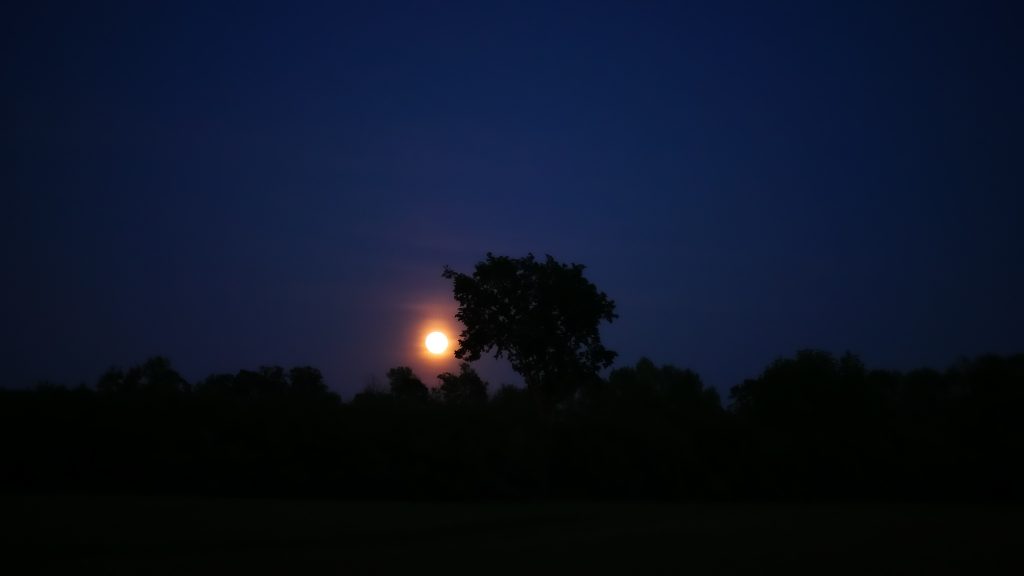
1 Robert Duncan, The H.D. Book. Berkeley: University of California Press, 2011. Pg. 443.
2 Abrah Arneson. The Weaving: Plants, Planets, and People. Hearttongue Press, 2021. Pg. X.
3 Arneson, The Weaving, Pg. 54
4 Arneson, The Weaving, Pg. 127.
5 Arneson, The Weaving, Pg. ix
6 Arneson, The Weaving, Pg. 14.
Victor Cirone
I am a Clinical Herbalist (RH, OHA) and Registered Homeopath (HOM DSHM, College of Homeopaths of Ontario). I practice Herbal medicine and Homeopathy because of the immense transformative powers that these modalities contain – both on individual and collective levels of experience. In addition to holistic medicine, I have deep and abiding interests in Anthroposophy, Psychoanalysis, and Depth Psychology.
Subscribe to Blog via Email
